GMS Field Trip
If you have any questions about field trips send email toGMS Field Trip
Granite in Georgia
Monday, February 20, 2017
Elberton, GA is known as the granite capital of the world. There are a multitude of quarries and processing plants as well as a granite museum. GMS members were eager to go there, so this trip had to be scheduled on a week day. Fortunately, we were able to pick President's Day, a Monday when these places were open and many members had the day off.
The first of 5 locations we visited was a granite quarry. From a safe distance we watched as a large block of granite was broken away from the quarry wall and lifted up and onto a truck. Quarrying techniques have changed over time. The block we saw was removed using a "wire saw" as well as carefully applied heat. Another wall in the quarry was processed with an older technique where several vertical holes were drilled, then a block was pried away. The drill marks are still visible on the quarry wall.
The second stop on the tour was a "block yard" where we got to see large blocks of granite from all over the world. The owners of the company explained the qualities of different blocks and where the stones were from. We saw blocks from Norway, Zimbabwe, South Africa, and India as well as North Dakota and even some blocks from the Atlanta area!
The third stop was a processing plant. They use huge circular saws as well as wire saws to cut blocks like we saw at the quarry and the block yard. Then they split large slabs into smaller slabs, polish the slabs, and engrave them. Everyone got to pick out a large and small core removed from some granite being processed that day.
The fourth stop was the Elberton Granite Museum. We watched a video about Elberton granite, then explored the many displays about granite, how it is quarried and processed, as well as many historic artifacts from the Elberton granite industry.
Our final stop was outside another processing plant. Field trip chair Charles Carter made special arrangements for us to collect pieces of counter top material left over after large pieces are trimmed. There was a tremendous variety of material available. It was difficult to choose, but we managed to collect plenty for lapidary use, garden use, just because it looks cool use, and a whole lot for grab bags too!
Many thanks to the Elberton Granite Association for arranging so many tours for us as well as providing transportation. We are also very grateful to the quarry, block yard, and processing plants for allowing us to visit.
Lori Carter
On behalf of Charles Carter, GMS Field Trip Chair
e-mail:
Location 1 - Granite Quarry
Photo by Lori Carter

Listening to information about granite quarrying
Photos by Lori Carter



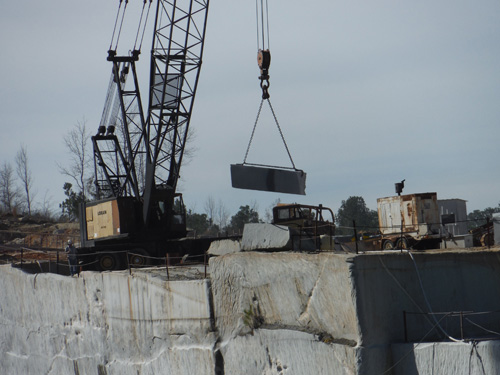

Watching a granite block being removed in the final stages of quarrying
Photo by Lori Carter

Drill marks are still visible from an older method for removing blocks
Photo by Lori Carter

Based on the size of the trees growing on the ledges,
this part of the quarry must have been mined a long time ago
Photo by Lori Carter

Bob Jarrett examines a feldspar intrusion
Photo by Lori Carter

Sample of granite with feldspar
Location 2 - Block Yard
Photo by Lori Carter

The owner of the company that imports granite blocks from all over the world
The block in the picture is from Norway.
Photo by Lori Carter

Diana Poppelreuter looks at a block of granite from the Atlanta area
Photo by Lori Carter

These red and pink blocks are from India
Photo by Lori Carter

There were large polished slabs at the block yard too

Close-up of the block from Norway. Note the subtle blue flashes.

This block has a very fine texture with uniform color
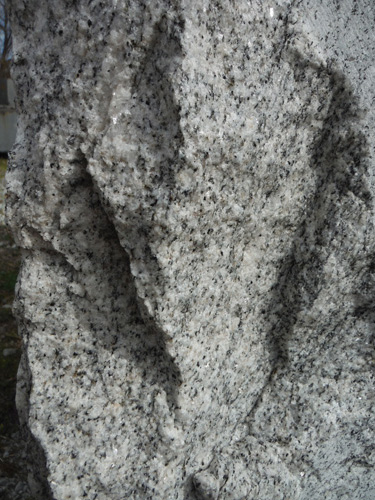
This block is grainier, with various colors
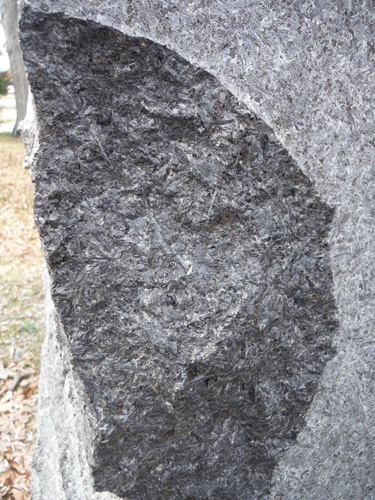
Another fine grained granite

Close-up of the granite from India
Location 3 - Processing Plant
Photo by Lori Carter

It was loud in the processing plant
Photos by Lori Carter

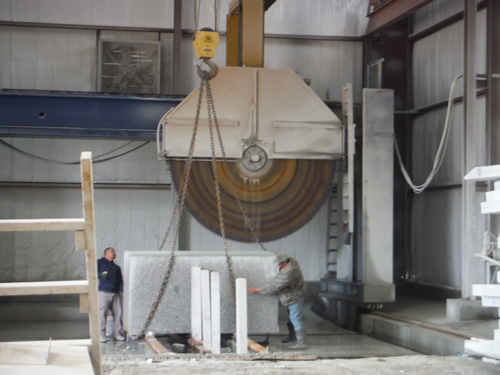

This big saw can make big slabs
Photo by Lori Carter

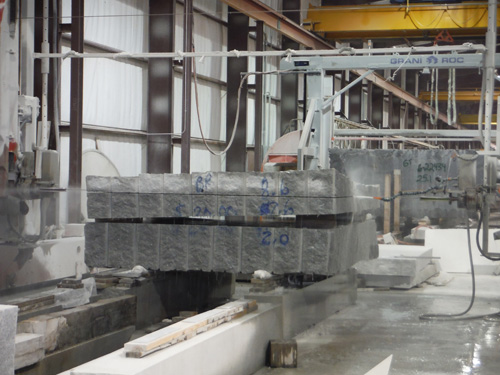
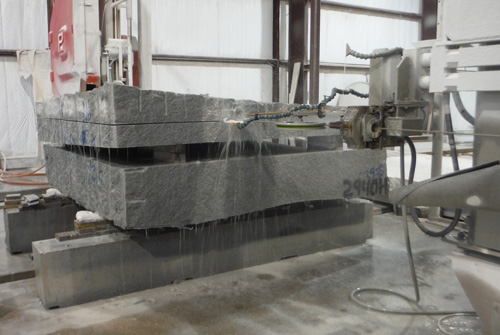


Wire saws use metal lines with periodic segments that contain industrial diamonds
like the scrap piece Thomas is holding in the last picture above
Photo by Lori Carter

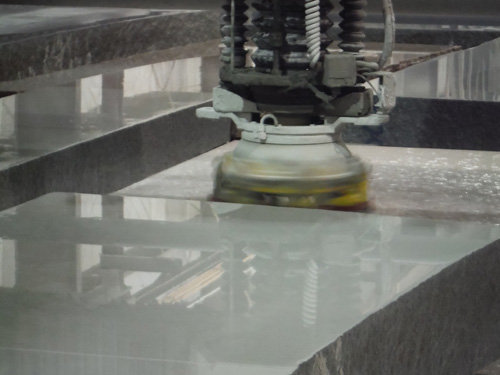

Large rotating pads use various grits to polish slabs
Photo by Lori Carter

This saw makes multiple passes to cut through a slab
Location 4 - Elberton Granite Museum
Photo by Lori Carter
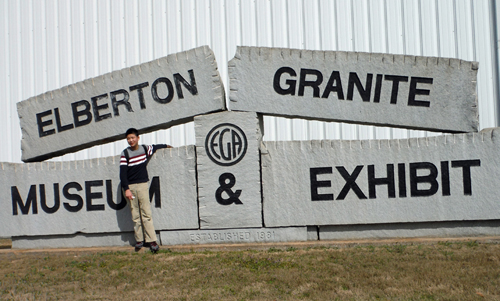
Thomas in front of the Elberton Granite museum
Photo by Lori Carter

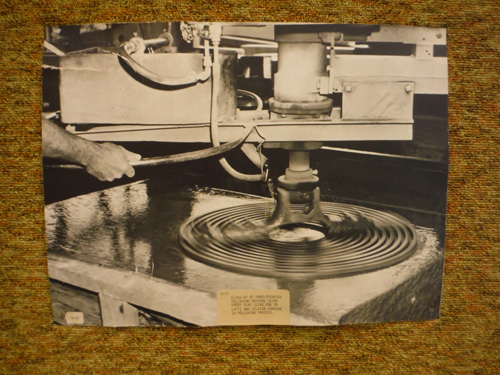
Exhibit of an old polishing device
Photo by Lori Carter



Display of grits used for polishing
Photo by Lori Carter

At the Elberton Granite Museum you can learn about "Duchy", a statue with a bizarre history
Photo by Lori Carter
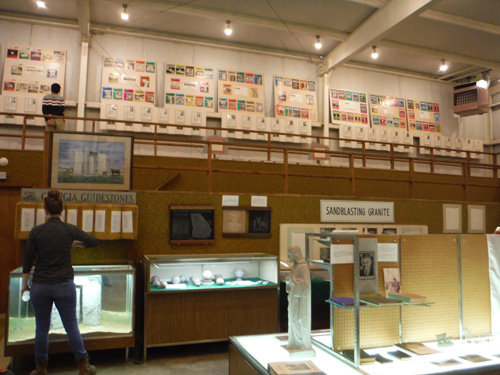
The Elberton Granite Museum is filled with information about granite and granite mining in Elberton
Location 5 - Spoil Piles
Photo by Lori Carter

Granite, granite everywhere...
Photo by Lori Carter

These granite cubes were popular
Photo by Lori Carter

Is this a huge phenocryst?
Photo by Lori Carter

Diana found a cache of labradorite and set aside pieces so everyone could get some
Photo by Lori Carter

The processing plant people gave us this carving of the state of Kentucky!
Photo by Lori Carter

Granite love
Photo by Lori Carter

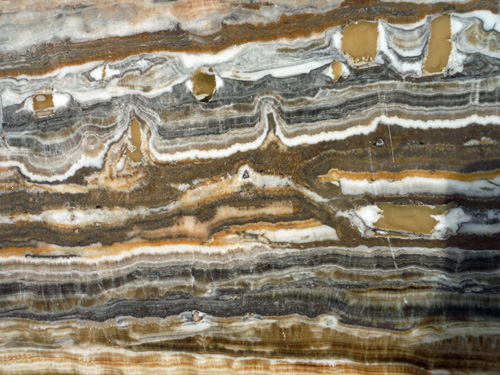

Saw this beautiful slab next to the plant
Photo by Lori Carter
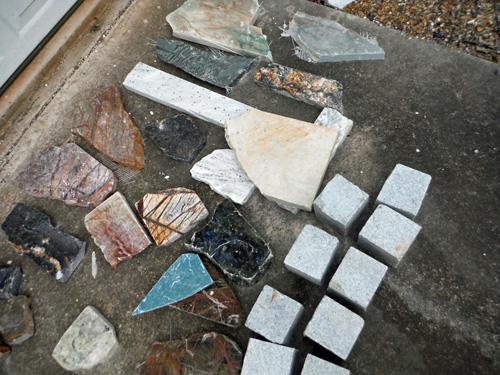
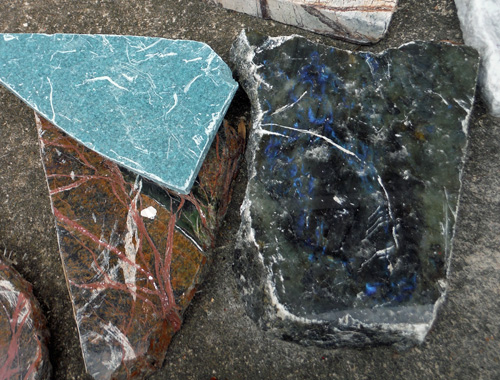

Some of Charles' finds
Click below for field trip policies

Copyright © Georgia Mineral Society, Inc.
